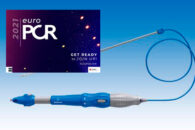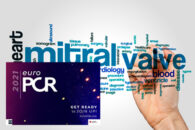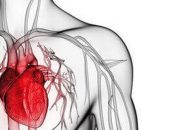Aspirin monotherapy (ASA) reduced the combined risk of thrombotic and bleeding events compared against dual antiplatelet therapy (DAPT) in patients receiving transcatheter aortic valve replacement (TAVR). This meta-analysis has only reproduced smaller randomize study outcomes and does not include the OCEAN-TAVI registry, the only one that has shown something different so far. Even though ASA…
Post TAVR Aspirin vs. Clopidogrel: Conflicting Findings and Guidelines
One month ago we shared a meta-analysis stating aspirin (ASA) as the best antiplatelet following TAVR vs. 3 to 6 dual antiplatelet therapy suggested by guidelines. At that time, guideline recommendations appeared obsolete. Several studies had started to support ASA monotherapy as the best antiaggregation scheme after TAVR. However, in the light of this new…
EuroPCR 2021 | Evolut Low Risk: Two-Year Results of The Self-Expanding Valve in Low-Risk Patients
Transcatheter aortic valve replacement (TAVR) with the Evolut self-expanding valve was non-inferior to surgery in patients with low surgical risk. After two years, the primary endpoint of death or disabling stroke was similar between both strategies. This presentation at EuroPCR 2021 reinforces the results presented during the American College of Cardiology (ACC) 2019 Congress and…
EuroPCR 2021 | TVT Registry: Outcomes of TAVR in Low Surgical Risk Bicuspids
In bicuspid patients with aortic stenosis and low surgical risk, transcatheter aortic valve replacement (TAVR) with balloon expandable valve offers results comparable to normal anatomy results. These data come from the TVT registry, presented at EuroPCR 2021 scientific sessions. Stroke and death rates (inhospital, 30 days and one year) in bicuspid patients did not result…
EuroPCR 2021 | CLASP: 2 Year Outcomes of the New Mitral Valve Repair System
The 2-year outcomes of the transcatheter mitral valve repair system PASCAL have shown high survival and low rehospitalization rates, and durable reduction of mitral valve regurgitation. These results were provided by the CLASP trial, presented during the EuroPCR scientific sessions and simultaneously published in JACC: Cardiovascular Interventions. The PASCAL system (Edwards) has been authorized for…
ACC 2021 | ATLANTIS 4D-CT: Apixaban and Sub-Clinical Thrombosis After TAVR
Indicating apixaban after transcatheter aortic valve replacement (TAVR) does not significantly reduce the risk of sub-clinical leaflet thrombosis compared with the standard of care. These data come from the computerized tomography (CT) scan sub-study from ATLANTIS, presented during the scientific sessions of the American College of Cardiology (ACC) 2021 Congress. In patients with no prior…
ACC 2021 | ATLANTIS: Apixaban After TAVR vs. Standard of Care
Adding apixaban to the treatment of patients undergoing transcatheter aortic valve replacement (TAVR) was non-superior to standard antithrombotic treatment, according to the randomized ATLANTIS trial presented today at the American College of Cardiology (ACC) 2021 Congress. Given its easy indication and good safety profile, it could be an option to vitamin K antagonists for patients with…
Is Rheumatic Etiology Counter Indicated for TAVR?
Patients with rheumatic aortic stenosis have been systematically excluded from all studies on transcatheter aortic valve replacement (TAVR). This study compared TAVR vs surgical aortic valve replacement (SAVR) outcomes in patients with rheumatic aortic stenosis and also vs TAVR outcomes in patients with degenerative aortic stenosis. The study looked at rheumatic aortic stenosis patients receiving…









